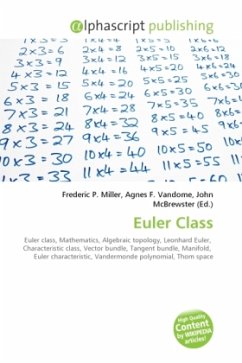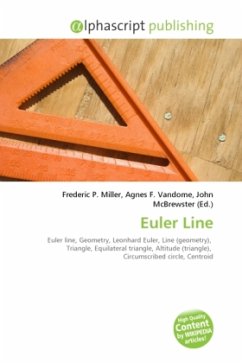
Euler Lagrange Equation
Versandkostenfrei!
Versandfertig in 6-10 Tagen
32,99 €
inkl. MwSt.

PAYBACK Punkte
16 °P sammeln!
High Quality Content by WIKIPEDIA articles! In calculus of variations, the Euler Lagrange equation, or Lagrange's equation, is a differential equation whose solutions are the functions for which a given functional is stationary. It was developed by Swiss mathematician Leonhard Euler and Italo-French mathematician Joseph Louis Lagrange in the 1750s. Because a differentiable functional is stationary at its local maxima and minima, the Euler Lagrange equation is useful for solving optimization problems in which, given some functional, one seeks the function minimizing (or maximizing) it. This is ...
High Quality Content by WIKIPEDIA articles! In calculus of variations, the Euler Lagrange equation, or Lagrange's equation, is a differential equation whose solutions are the functions for which a given functional is stationary. It was developed by Swiss mathematician Leonhard Euler and Italo-French mathematician Joseph Louis Lagrange in the 1750s. Because a differentiable functional is stationary at its local maxima and minima, the Euler Lagrange equation is useful for solving optimization problems in which, given some functional, one seeks the function minimizing (or maximizing) it. This is analogous to Fermat's theorem in calculus, stating that where a differentiable function attains its local extrema, its derivative is zero. In Lagrangian mechanics, because of Hamilton's principle of stationary action, the evolution of a physical system is described by the solutions to the Euler Lagrange equation for the action of the system. In classical mechanics, it is equivalent to Newton's laws of motion, but it has the advantage that it takes the same form in any system of generalized coordinates, and it is better suited to generalizations (see, for example, the "Field theory" section below).












